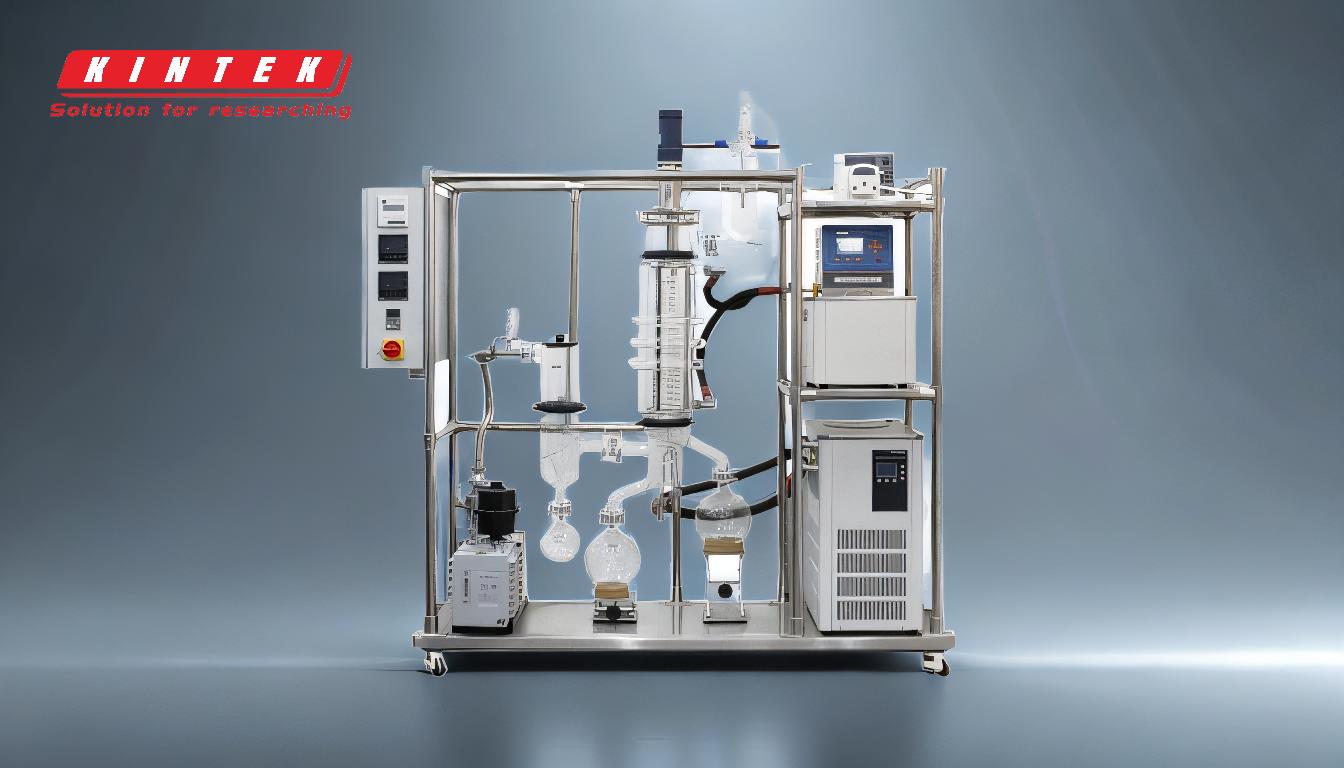In vacuum distillation, the vacuum level is a critical parameter that influences the efficiency and quality of the distillation process. Typically, a vacuum of up to 1 mbar is sufficient for most applications, including distillation, as it lowers the boiling points of solvents, allowing distillation to occur at lower temperatures. This is particularly important for heat-sensitive materials. The vacuum level is influenced by components such as the vacuum pump, sealing ring, and vacuum tube, and it is often controlled using a vacuum controller or valve to ensure precision and avoid issues like explosion boiling. The specific vacuum requirements can vary depending on the solvent and desired outcomes, with modern systems offering adaptive vacuum control for maximum precision.
Key Points Explained:

-
Typical Vacuum Levels in Distillation:
- A vacuum of up to 1 mbar is generally sufficient for processes like distillation, suction, concentration, and vacuum drying. This level of vacuum can be generated using an oil-free diaphragm pump.
- The vacuum level is crucial because it lowers the boiling points of solvents, enabling distillation to occur at much lower temperatures than under normal atmospheric pressure. This is particularly beneficial for heat-sensitive materials.
-
Factors Influencing Vacuum Levels:
- The system vacuum value is influenced by several components, including the vacuum pump, sealing ring, and vacuum tube. A lower vacuum pump limit results in a lower system vacuum value, which should be set appropriately to ensure efficient distillation.
- Improper vacuum settings can lead to issues such as explosion boiling, thermal destruction, oxidation, or impurities in the distillate. Therefore, accurate control of the vacuum level is essential to maintain the quality of the distillate.
-
Control of Vacuum Levels:
- A vacuum controller or valve is recommended to control the system vacuum value. This ensures that the vacuum level is maintained at the optimal level for the specific distillation process.
- In rotary evaporation, for example, a vacuum pump combined with an electronic vacuum control can adjust the vacuum level to an optimal level. One common method is 'two-point control,' where a valve on the vacuum line adjusts based on a user-defined setpoint. The controller reads the actual process pressure and opens or closes the valve to maintain the vacuum level close to the setpoint.
- For maximum precision, speed-controlled adaptive vacuum control can be used to avoid pressure fluctuations and continuously track the optimum process condition.
-
Importance of Vacuum in Distillation:
- The vacuum system in a rotovap significantly reduces the internal pressure, which lowers the boiling points of the solvents. This allows for distillation to occur at much lower temperatures than would be possible under normal atmospheric pressure.
- Vacuum pressure is used to draw vapors from the evaporating flask into the condenser, facilitating the separation and cooling of gas-phase components back into liquids, which are then collected as distillate.
-
Variability in Vacuum Requirements:
- The vacuum requirements in a system depend on the solvent being used and its temperature, which affects its evaporation rate. The depth of the vacuum is one of the key variables regulated in modern systems, and the required pressure can vary significantly depending on the desired outcomes.
- For example, in short-path distillation, the maximum vacuum that can be achieved is 0.098Mpa, which is significantly higher than the typical 1 mbar used in other distillation processes.
-
Impact of Vacuum on Distillate Quality:
- Temperature and vacuum control are critical because improper settings can lead to thermal destruction, oxidation, or impurities in the distillate. Accurate control ensures the desired cannabinoid or other compounds are isolated without degradation or contamination.
- The vacuum level must be carefully managed to avoid issues such as explosion boiling, which can occur if the vacuum is too high, leading to rapid boiling and potential damage to the distillation setup.
In summary, the vacuum maintained in vacuum distillation is typically around 1 mbar, but this can vary depending on the specific requirements of the process and the materials being distilled. The vacuum level is controlled using various components and techniques to ensure efficient and safe distillation, particularly for heat-sensitive materials. Proper vacuum control is essential to avoid issues like explosion boiling and to ensure the quality and purity of the distillate.
Summary Table:
| Key Aspect | Details |
|---|---|
| Typical Vacuum Level | Up to 1 mbar for most applications, including distillation and drying. |
| Key Components | Vacuum pump, sealing ring, vacuum tube, and vacuum controller/valve. |
| Control Methods | Two-point control, adaptive vacuum control, and electronic vacuum systems. |
| Impact on Distillate | Prevents explosion boiling, thermal destruction, and impurities. |
| Applications | Heat-sensitive materials, cannabinoid isolation, and solvent recovery. |
Need help optimizing your vacuum distillation setup? Contact our experts today for tailored solutions!










